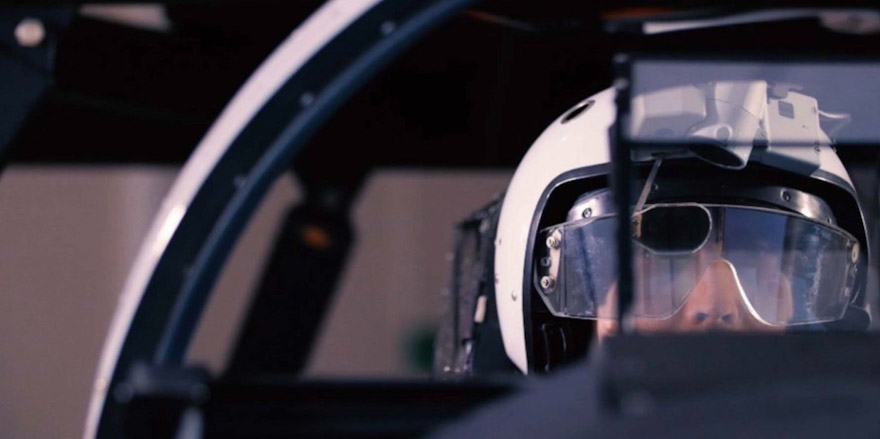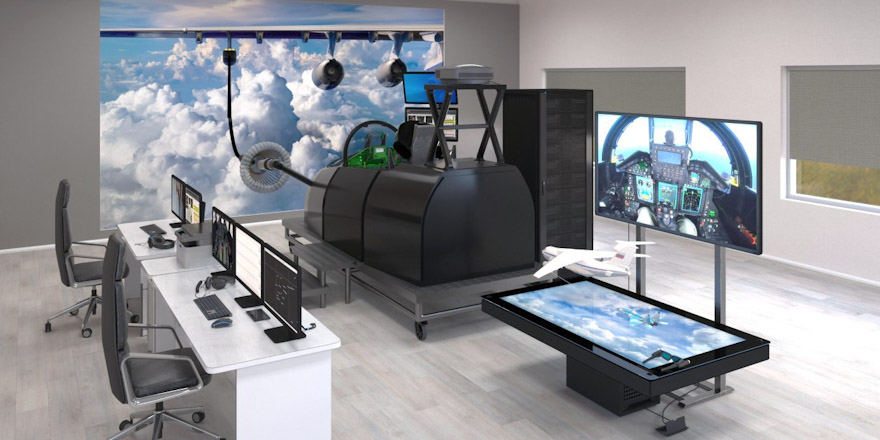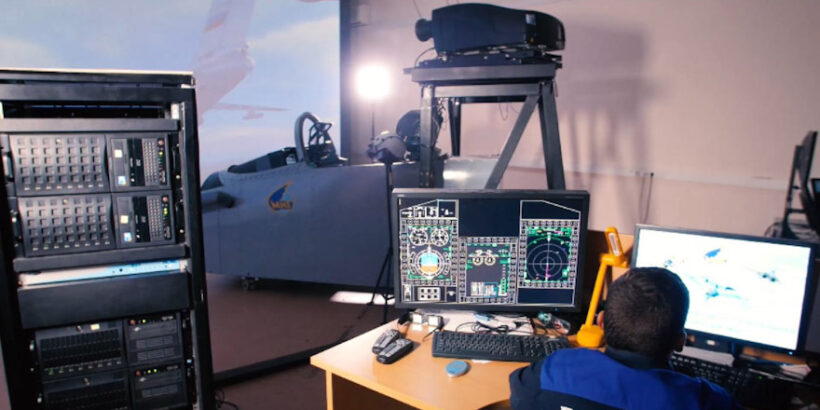Training of pilots for modern fighters costs approximately $5 million but due to development of technical aids this labour cost can be reduced by 1.5-2 times and the integrated flight simulators are several times cheaper than the cost of flight personnel training.
Russian aircraft corporation MiG has been building flight simulators for over 20 years: at the turn of 90s – 2000s Mikoyan Design Bureau started development of complex technical training tools (3T) for MiG-29 aircraft. In 2004, the first MiG-29B interactive computer-based training system (ICBT) for training of pilots on MiG-29B fighters has been delivered to the Myanmar Air Force. The letter “B” stood for the aircraft, which were delivered to countries outside the Warsaw Pact.
The creation of the training system by the fighter’s developer himself brought one undeniable advantage – now the Design Bureau could create and supply equipment for it simultaneously with the aircraft. Previously, different contractors were engaged in the production of training equipment: one made posters, another made a classroom, and a third one made simulators. The aircraft operator could receive the equipment only after the aircraft had been put into service. As a result, simulators sometimes did not appear until 1.5-2 years after the arrival of new aircraft.
The scheme for creating 3Ts works as follows. The first to be included in the development are scriptwriters from the MiG 3T unit. Already in the process of creating the aircraft, they begin to form scenarios for training programs that describe the purpose, composition and functioning of aircraft systems and avionics. At the same time, the media group builds a library of photos, videos and animations, which make the training content as accessible as possible to the audience.
Once the scenarios are developed, they are distributed to the Design Bureau’s functional units in charge of aircraft systems, whose specialists verify that the scenarios comply with the design documentation. The programmers then create a training program from the descriptive text and media library, taking into account the feedback. Once the program is ready, the scriptwriters develop questions to check the quality of the training material. At the same time, procedural and complex simulators are being produced.
As noted by RAC MiG, ICBT-29 is not just a set of simulators, computing equipment and training programs, it is a system that provides five levels of training. First there is group training for aviation personnel, flight and engineering personnel in lecture classes. Then they move on to individual training in a computer room, where each trainee sits at his or her own workstation.
The training content is built on the principle of breaking down the aircraft into its component elements. For each system and sub-system, there is a sub-section with its purpose, composition, device description, interaction with other elements, maintenance, troubleshooting and troubleshooting. For maintenance personnel, information on the technical face of the aircraft is given in greater depth than for pilots.
At the third level, training takes place on procedural simulators, where practical skills in handling cockpit equipment, practicing actions in special cases, and learning the cockpit’s information and control field are developed. At the fourth level, pilots move on to a comprehensive aircraft simulator where they learn piloting skills and the ability to solve target problems.
The final fifth level is provided by the in-flight training mode, which is already implemented on the aircraft. After the pilots have passed all four levels they will start flying, where they will have the opportunity to practice the use of weapons without real launches, thanks to the operation of the onboard equipment in training mode.
Modern fighters have a high level of intelligence that prevents the pilot from committing gross piloting errors, and the complex aircraft flight control system (AFCS) takes over some of the tasks of piloting and performing the assigned task. But in the event of a AFCS failure, the pilot must be able to control the aircraft and its systems without restriction. Flight simulators cannot simulate all the physical factors of flight. This is why it is now declared worldwide that for quality training a military pilot must spend 50% of his time in a simulator and the other 50% in a real aircraft.
Modern simulators and training programmes in computer classrooms provide a high level of visualisation of learning content. It is now presented in a more visually comfortable way, visualisation tools are developing rapidly, 3D graphics, virtual and augmented reality, and 3D glasses are being widely used. All these technologies and tools improve visibility and accelerate the learning process.

However, there are subtleties associated primarily with the technical characteristics of modern visualisation tools. For example, the existing capabilities of projectors or 3D glasses cannot reliably display distant objects and targets. Their images appear smaller than a single pixel at long distances. For example, a deck pilot can easily see an aircraft carrier at a distance of 5-6 km, while modern projectors can only display a ship at a distance of 2-3 km, and that only as a single pixel. Or, for example, a pilot can spot an enemy fighter at a distance of about 10 km. But in modern 3D glasses such a target is not displayed because its size is again less than a single pixel. 3D glasses begin to show a target of this size only at a distance of 3-4 km, when in reality the pilot must already work on it.
Another problem is the insufficient speed of modern computers. If a simulator is simulating a landing on an airfield or an aircraft carrier, when the distance to the ground or the deck is very short, the computer system has no time to properly process the image. The result is a fuzzy picture that does not help the pilot, but rather misleads him, creating a false skill, making it impossible to accurately determine altitude above deck or ground and practice landing, as it is not possible to determine the distance to the ground or deck. Therefore, no landing training is provided in simulators.
In flight training the pilot can see a computer simulation in advance for greater clarity: how it will look in the simulator or in real flight, what information will be reflected on the cockpit instruments. The instructor may stop the demonstration and explain the specifics of the task and what is displayed on the screens and instruments. The pilot then goes to the simulator room or airfield and performs the task, which can be monitored in real time by other trainees in a nearby classroom. This brings a new level of clarity to training and flight analysis.
Another modern trend is the mobility system for flight simulators. Whereas previously it was only available on complex simulators, it is now also available on some procedural simulators. A procedural or specialised simulator is designed to form, maintain or restore pilots’ skills in the intended use of individual or several aircraft systems, equipment and armament.
For heavy transport pilot training, the mobility system is certainly useful. It teaches the pilot how to process non-instrumental signals and control the airliner under the vibrations and jolts of flying in difficult weather conditions. This is not the case with fighter jets. These aircraft are high speed and highly manoeuvrable. When flying them, the pilot is exposed to high overloads. Existing mobility systems cannot duplicate such manoeuvres, and consequently cannot convey the sensation of real flight.

Similar to visualization means, the mobility system does not provide pilot with non-instrumental signals, i.e. does not give him the feeling of real flight. Therefore, the mobility system is generally not used in complex fighter simulators. The mission of such simulators is to teach how to operate multifunctional indicators of the cockpit control information field and controls of the aircraft. A pilot will get a real feeling for the aircraft only when he flies a real fighter.
However, there are modes when installing the agility system is very useful. For example, when simulating aerial refuelling. A simulator with a stereo visualisation system was built at the Mikoyan Design Bureau to practise this mode. In this simulator, the cockpit and refuelling rod are real, while the tanker plane, the hose and the refuelling system cone are virtual. This is where the mobility system comes in handy. After all, there are no high-energy manoeuvres during aerial refuelling; such a simulator with mobility ensures almost complete authenticity of flight.


